
|
||
|
Portland art blog + news + exhibition reviews + galleries + contemporary northwest art
|
||
Josh Smith at PNCA 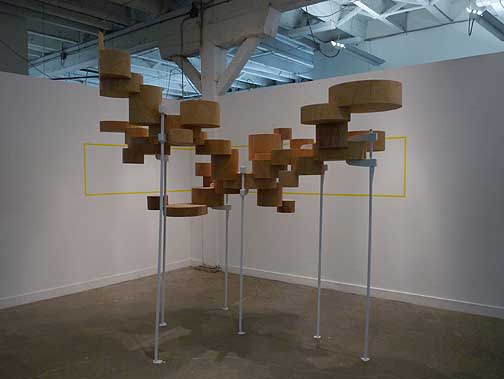 Josh Smith's The Righteous Foundation of Us is yet another exciting installation in the Manuel Izquierdo Gallery at PNCA (the only gallery in Portland cool enough to require a buzzer). In this case the show is a multilayered rumination on the goals of modernism, materials, intellectual positioning and it's relationship to us now, aka a generation that must rebuild things taken for granted like the American Dream. Smith has been a fixture in the Portland art scene for many years now as one half of the Tilt Gallery's curatorial team with his wife Jenene Nagy (former PORTstar) and as the unofficial spokesmodel for OCAC where he graduated from last year. Thus, this is an important first post grad school show. A small sculpture before the main gallery is simply too reminiscent of Isa Genzken to discuss. The main piece in the gallery's idiomatic space was sited intelligently by situating the work slightly off center in an activating way. It also uses a defining a yellow rectangle that emphasizes the corner of 2 walls. This install really works because the gallery is the mixing chamber between the metal, wood and ceramics shops, giving the space a bauhausian air of experimentation. Often exhibiting artists do too much in this space but that isn't a problem here. Instead, it feels like a thought provoking prototype on display for colleagues as they go about their work. 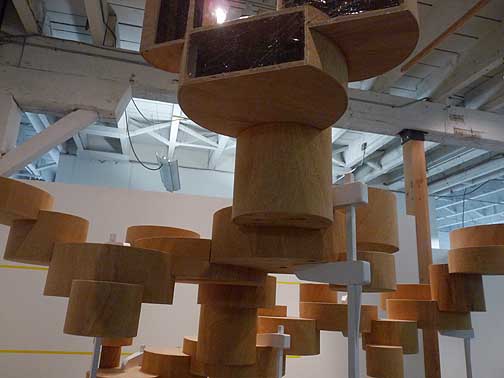
Smith is particularly interested in hive like modernist living arrangements. As such, Smith's sculpture alludes to things like Moshe Safdie's Habitat, Goldberg's Marina City and Oscar Niemeyer's Brasilia...all of which used collective conglomerations and or round "hat box" like structures. 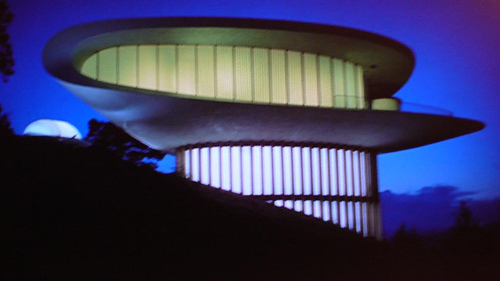
Still of Sculptured House in Woody Allen's Sleeper It also evokes an arbitrarily idealized future that evokes things like the Woody Allan's Sleeper. The film is littered with futuristic buildings but the one that most fits Smith's show is the awesome Sculptured House by Charles Deaton on Genessee Mountain in Colorado. Deaton was famous for saying, "People aren't angular, so why should they live in rectangles?" In this show Smith sidesteps the issue by not necessarily producing a model for buildings, it could just as easily be a shelving unit…. though an awesomely inefficient one at that. In fact, Smith's introduction of plastic over the open edges implies a certain arbitrary ineffectiveness as well. The plastic is somewhat unconvincing barrier too and I'm not certain that part really works for the sculpture... it doesn't fail hard enough like it does with Genzken or Richard Tuttle. The entire assembly stands on faux clamp stilts, which seem to have white paint dripping down them. It evokes Jim Lambie's work but where that work implies a personage as painting this is more like a construction scaffold and a bit of a craftsmen's inside joke. It isn't as effective as Lambie's stilted constructions because it leans towards a too obvious narrative about making stuff and showing off while doing it (a less developed form of Roy McMakin that in itself seems like an end game). As a gesture it is interesting though, elevating construction for snarky construction's sake above any usefulness or utopian idealism. 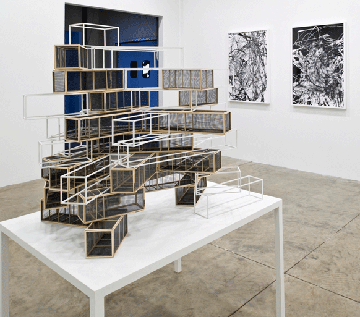 Jesse Durst at Fourteen30 (foreground) All of this is similar to Jesse Durost's current show at Fourteen30 but somewhat more successful because Durost's constructions merely evoke or reference Sol LeWitt, Buckminster Fuller and Robert Irwin's scrims without anything approaching their rigor (I want to like it but can't quite yet, unless he builds more purposesful entropy into these imperfect un-dioramas). Unlike Durost here, Smith obviously has years of hard won shop rigor and everything is pretty solid but some of these moves still seem tentative as if this prototype still requires reworking. Still, it succeeds because it is more reflexively self-aware of it's flaws. For Durost it's an engineeering issue, some are quite nice, but they just need stronger materials in key parts. Model sized work invites tight scrutiny. 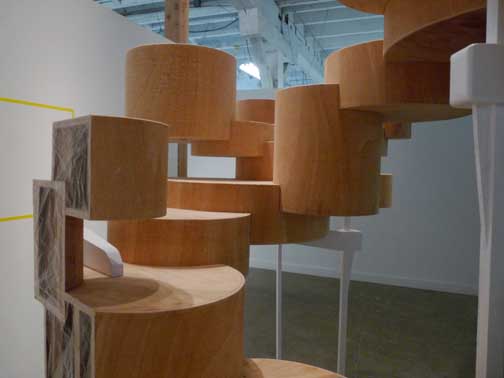
In the past a lot of Postmodernist rhetoric by French theorists like Foucault, Deleuze etc. tended to create paper tiger arguments against Modernism's idealism and often claimed monogenic viewpoints (???Le Demoiselles D'Avignon was hardly idealistic or monogenic and neither was Pollock) but that view has really lost credibility with artists in the past decade... without definable idealogues like Greenberg to hijack and or demonize it seemss like a legitimate pluralism not postmodernism seems to rule the day now. Besides with the horrors of The Holocaust can anyone really blame those mid century architects (who really didn't speak for the painters even though they made their museums) for trying to show how planning and mobilization of a workforce could be used for something good instead of genocide and war? Because of the dissolution of the old Modernism/Postmodernism debate, Josh Smith (like a lot of Portland artists), is right to address space as a kind of idea creating BF Skinnerian issue. For example those antiseptic, even clinical "white box" Postmodern galleries ala Richard Meier and others seemed to fetish a kind of disconnected failure, whereas this show feels different… like new blood coursing through some borrowed old veins and possibly bursting old blood vessels. Maybe it's all staged to see if an EMT will arrive? Overall, I'd consider this a minor palpitation in modernism's mummified heart (which is Postmodernism's heart as well). Time will tell if Josh Smith can produce something wierder and more akin to a stroke, heart attack or seizure in the future. Posted by Jeff Jahn on February 13, 2009 at 14:49 | Comments (0) Comments Post a comment Thanks for signing in, . Now you can comment. (sign out)
(If you haven't left a comment here before, you may need to be approved by
the site owner before your comment will appear. Until then, it won't appear
on the entry. Thanks for waiting.)
|
| s p o n s o r s |
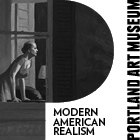 |
 |
 |
 |
 |
 |
 |
 |
 |
 |
 |
 |
 |
 |

|
Site Design: Jennifer Armbrust | • | Site Development: Philippe Blanc & Katherine Bovee | |

